Selecting the right products is one of the most critical factors for success in ecommerce. Amazon Best Sellers provides real-time insights into market trends, while SellerSprite offers in-depth data analysis to evaluate competition and profitability. Combining these tools allows sellers to identify promising products more efficiently and minimize risk.
This guide explains how to analyze Amazon Best Sellers, identify emerging opportunities, and leverage SellerSprite to validate product ideas. Whether you are a new seller or an experienced operator, these methods can help optimize your product sourcing strategy.
Understanding Amazon Best Sellers
The Amazon Best Sellers list ranks the top-selling products across various categories in real time. It offers valuable insights into consumer behavior and demand trends.
- Market Trends at a Glance: Amazon Best Sellers reflects customer purchasing preferences and shifts in demand. For example, during the pandemic, home fitness equipment dominated the Sports category. After the pandemic, travel gear and outdoor equipment saw significant growth.
- Sourcing Inspiration: By analyzing trending products, sellers can spot niche opportunities. For example, when silicone collapsible kettles entered the top 100 in Kitchen & Dining, it triggered a wave of similar innovations.
- Competitor Benchmarking: Top-ranked products often reflect effective selling strategies. Reviewing their titles, images, descriptions, and customer reviews offers insights into industry best practices. For example, a self-cleaning cat brush in the Pet Supplies category succeeded by solving customer pain points, providing high-quality product videos, and using optimized keywords.
Amazon Best Sellers Features
- Real-Time Rankings: Amazon updates best-selling product rankings every hour, showing real-time sales performance across categories.
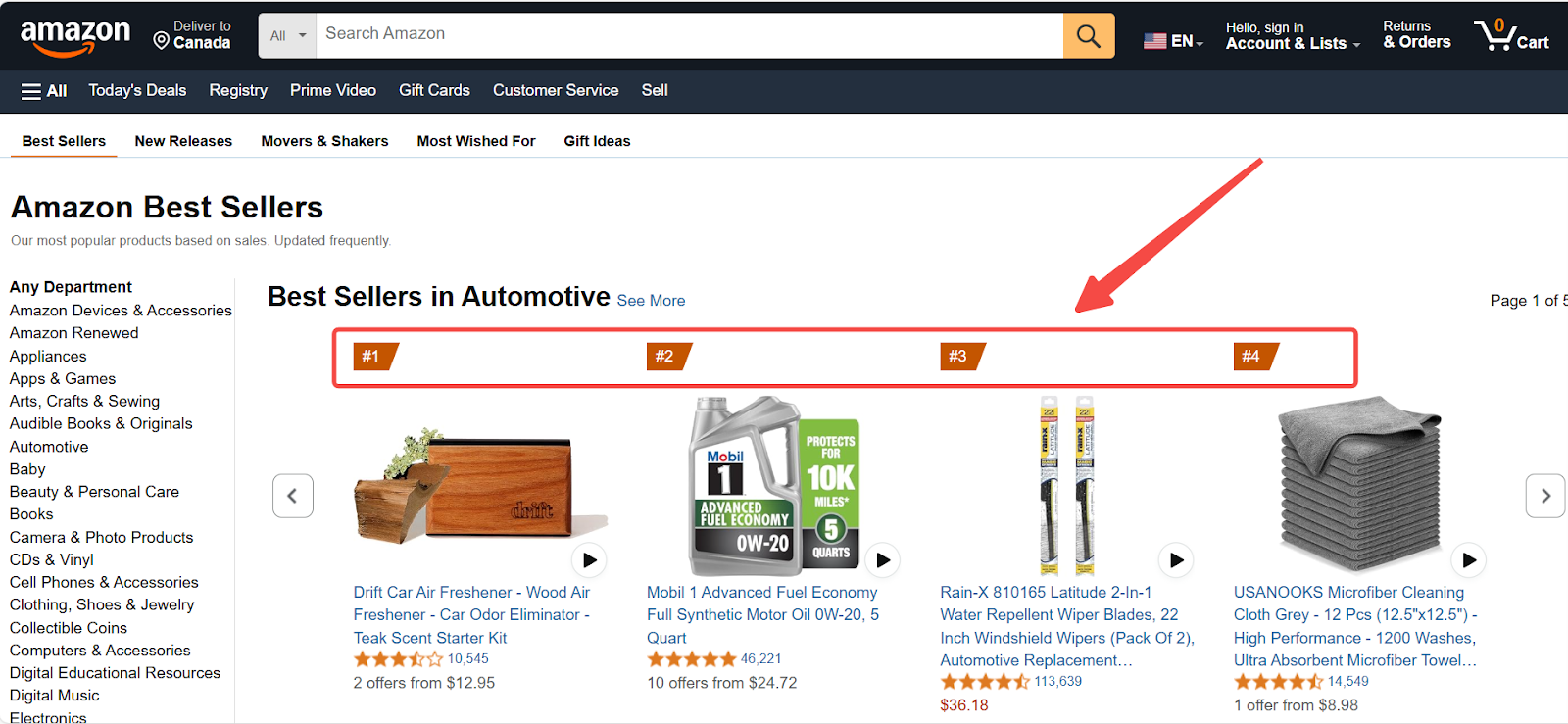
- Main Category Lists: Displays primary product categories such as Electronics, Home & Kitchen, or Beauty & Personal Care.
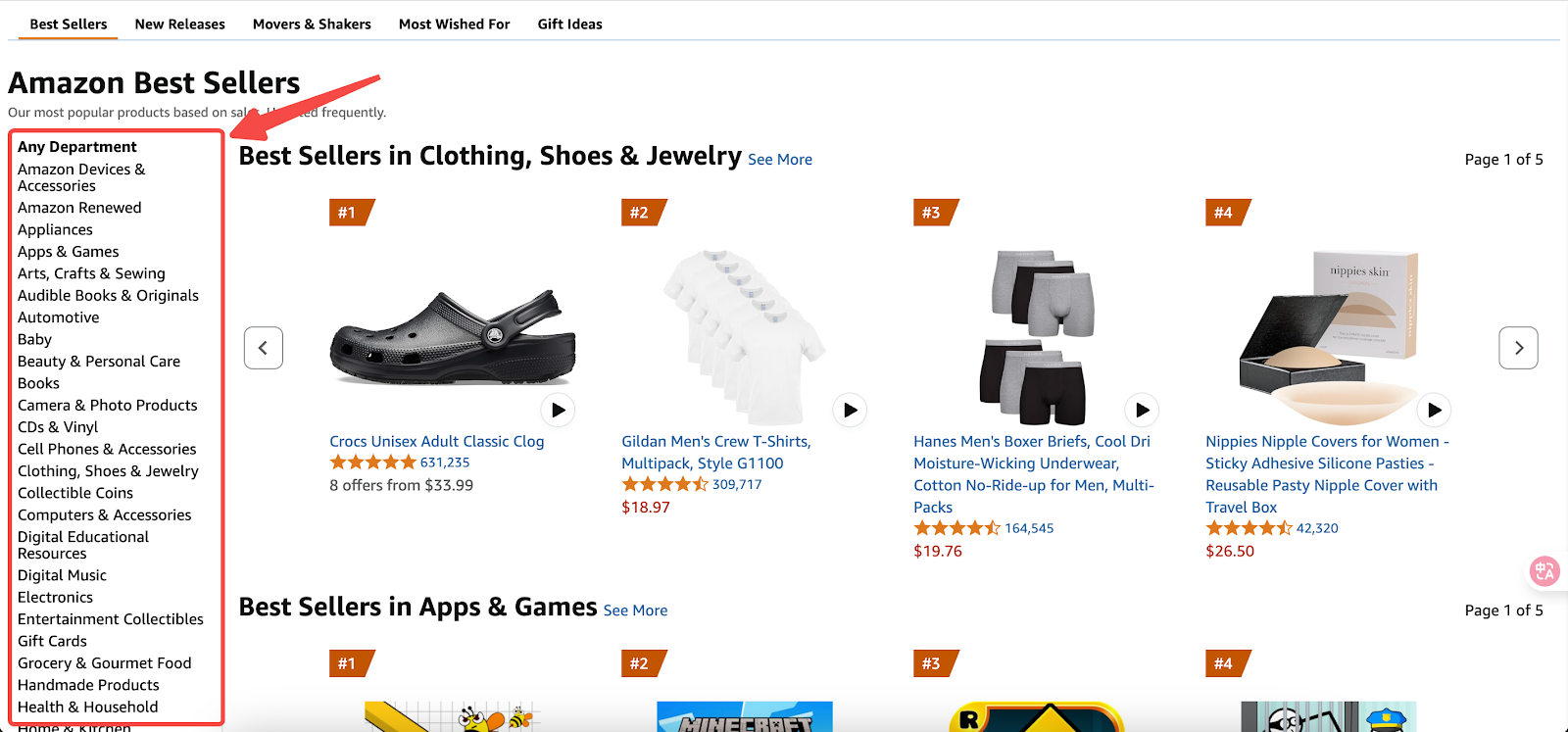
- Subcategory Lists: Breaks down each main category into more specific niches, helping sellers analyze more targeted product segments.

- New Releases: Highlights recently launched products that are experiencing rapid sales growth.
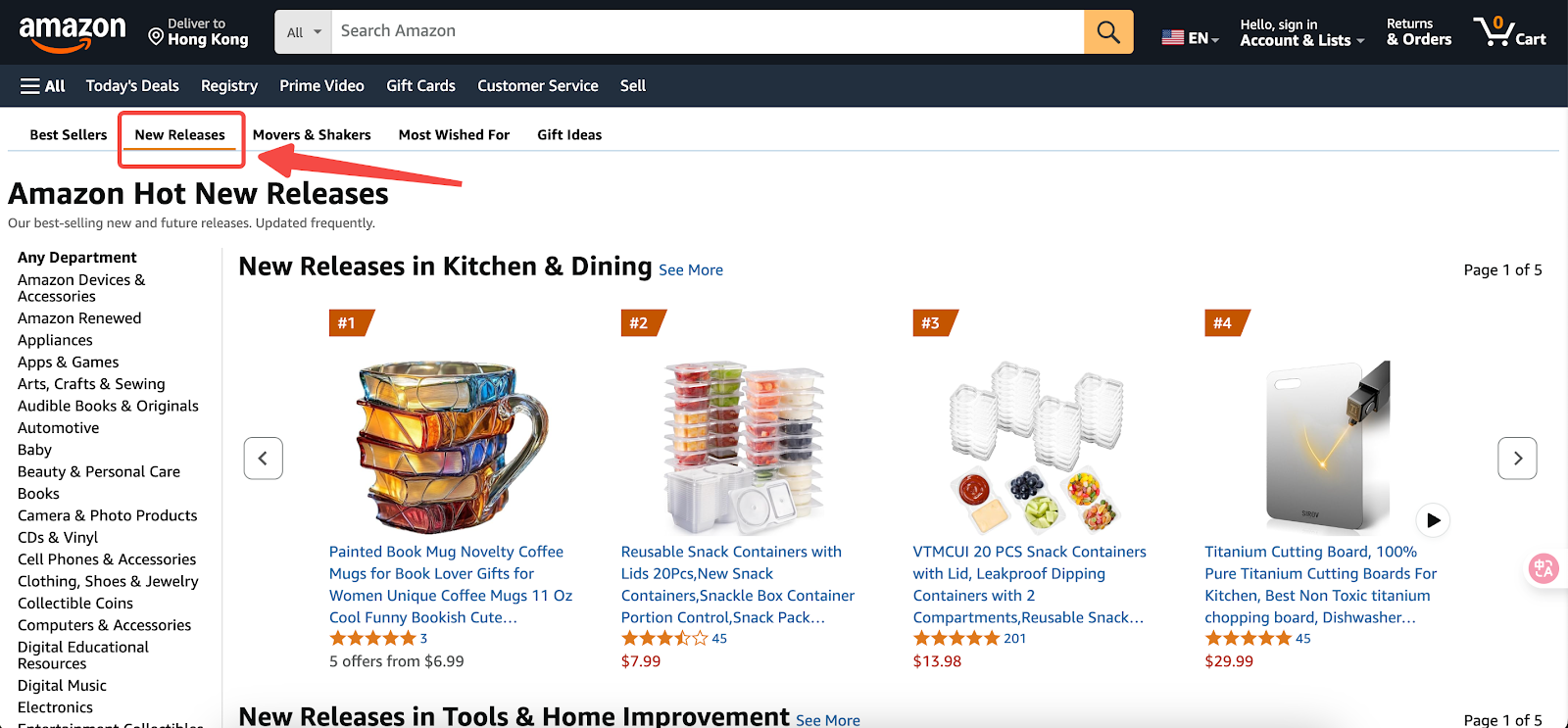
- Movers & Shakers: Lists products that have seen the fastest sales rank increases over the past 24 hours.
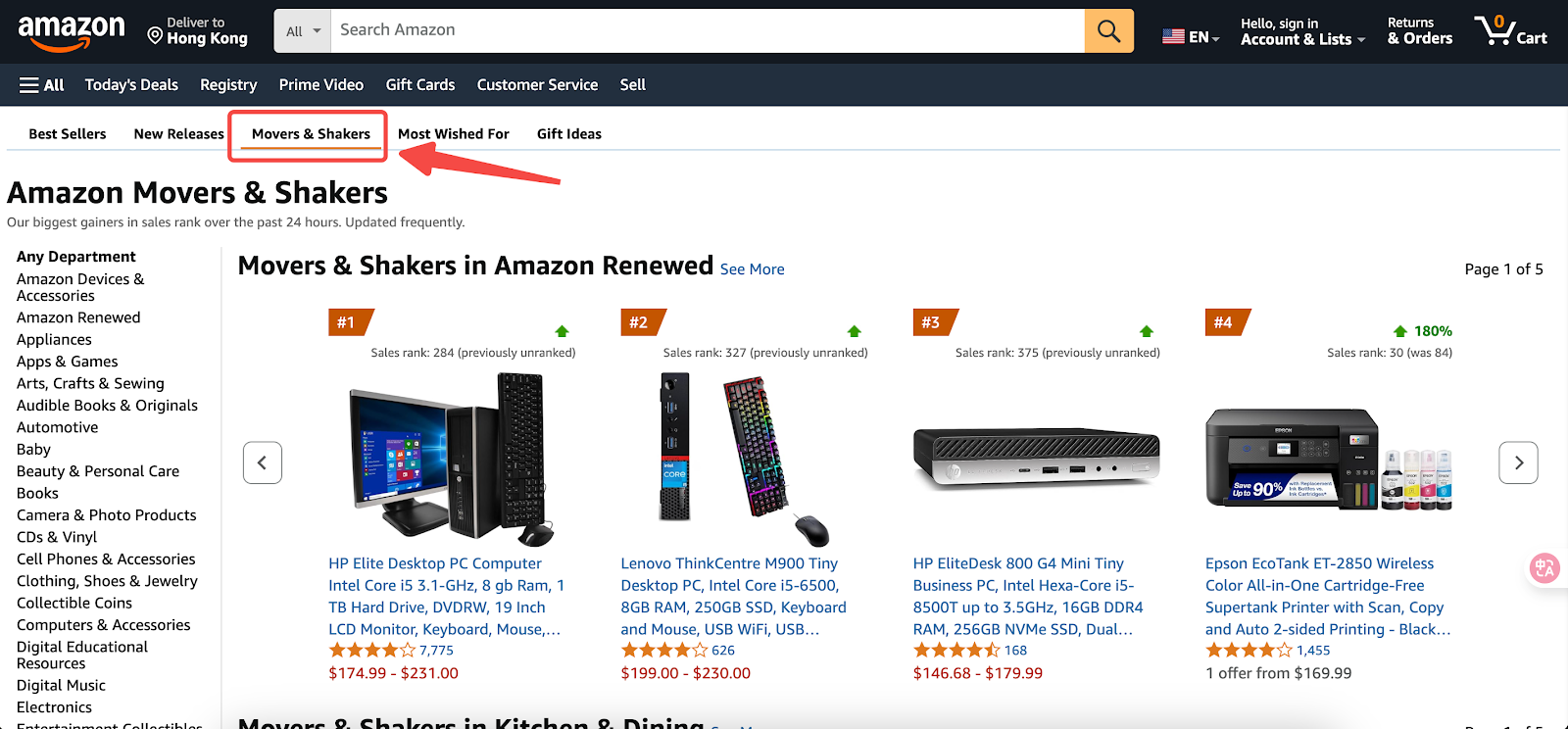
- Most Wished For: Displays products that customers frequently add to their wish lists, indicating strong purchase intent.
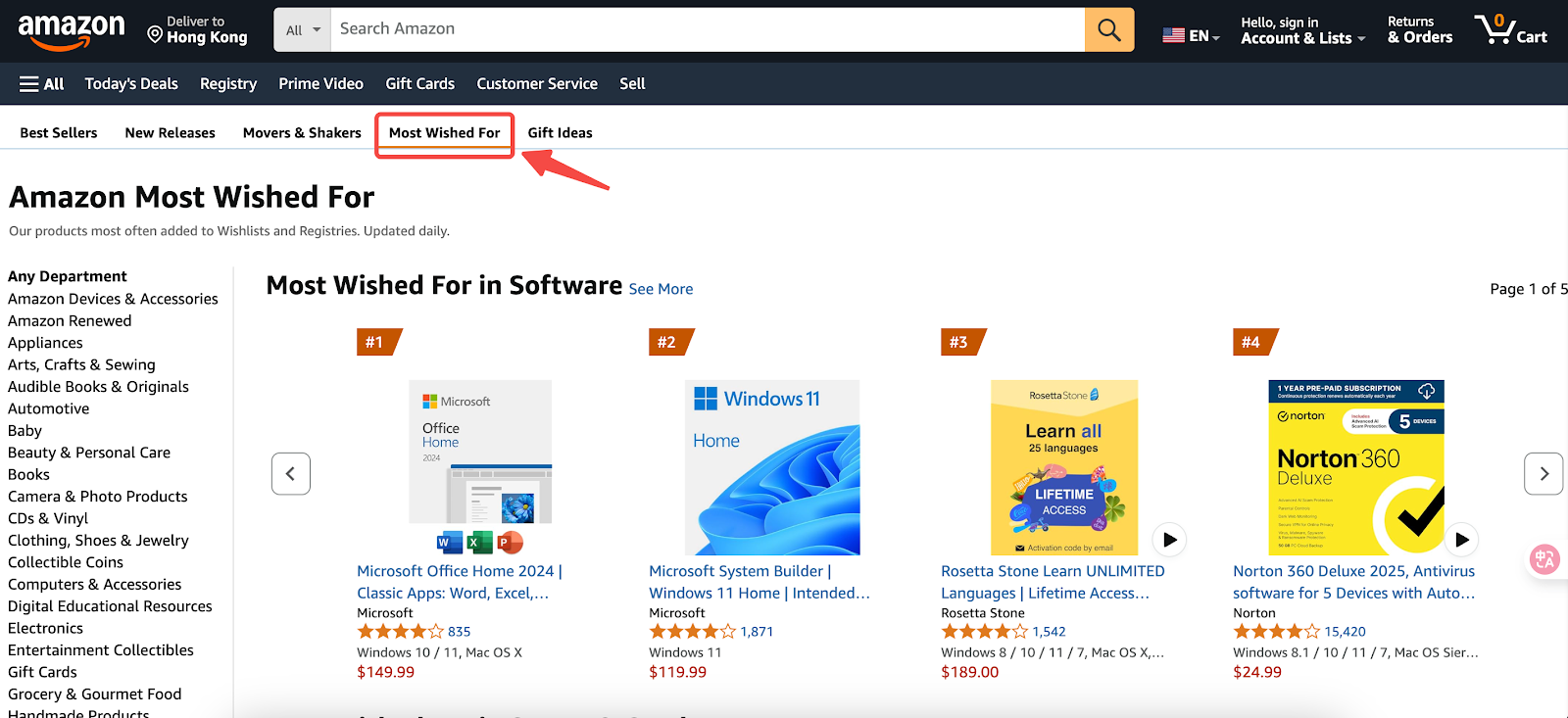
- Gift Ideas: Curates popular gift options for seasonal or holiday promotions.
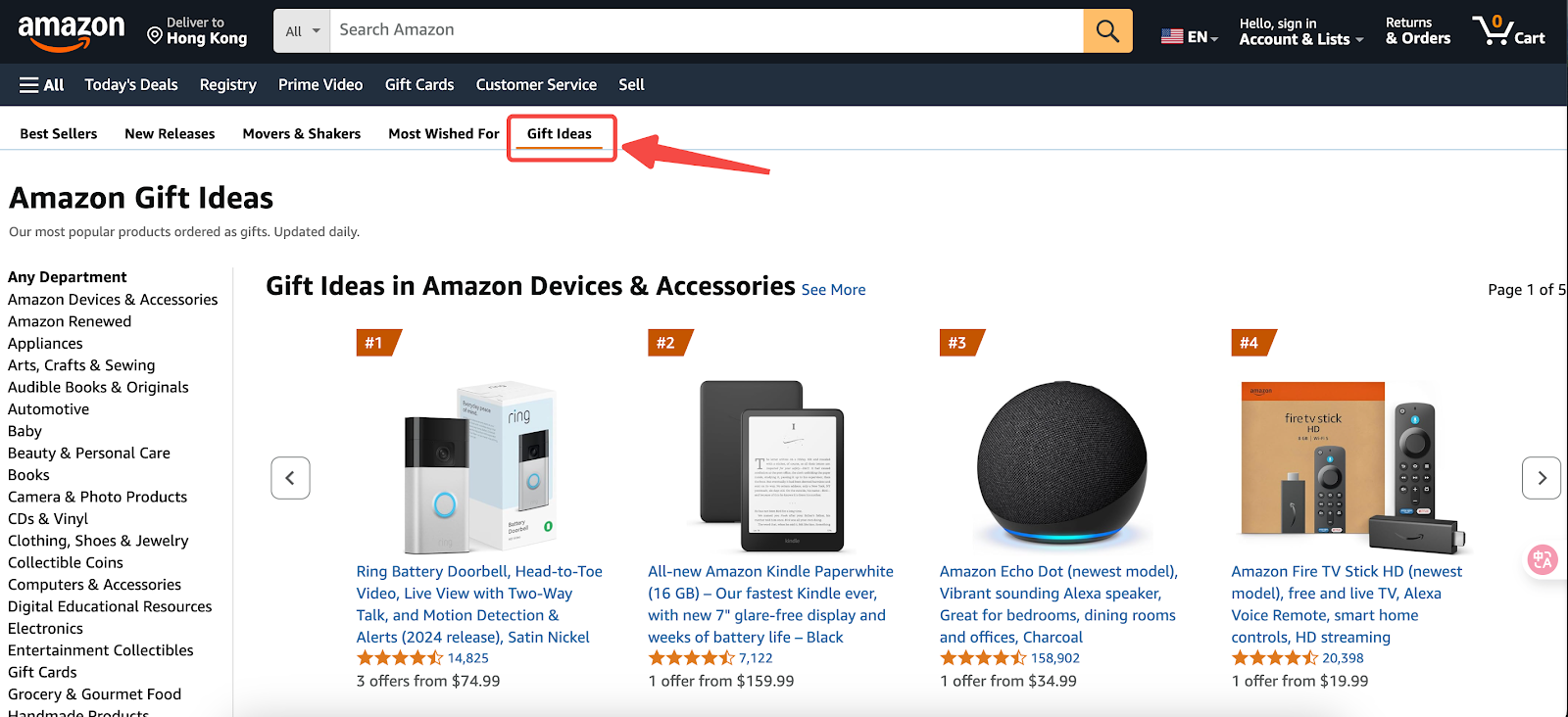
Analyzing and Evaluating Amazon Best Sellers
Visit Amazon Best Sellers official page.
1. Select Your Target Category: Choose a category that matches your business niche. For example, select "Beauty & Personal Care - Skin Care - Maternity" if you sell maternity products.
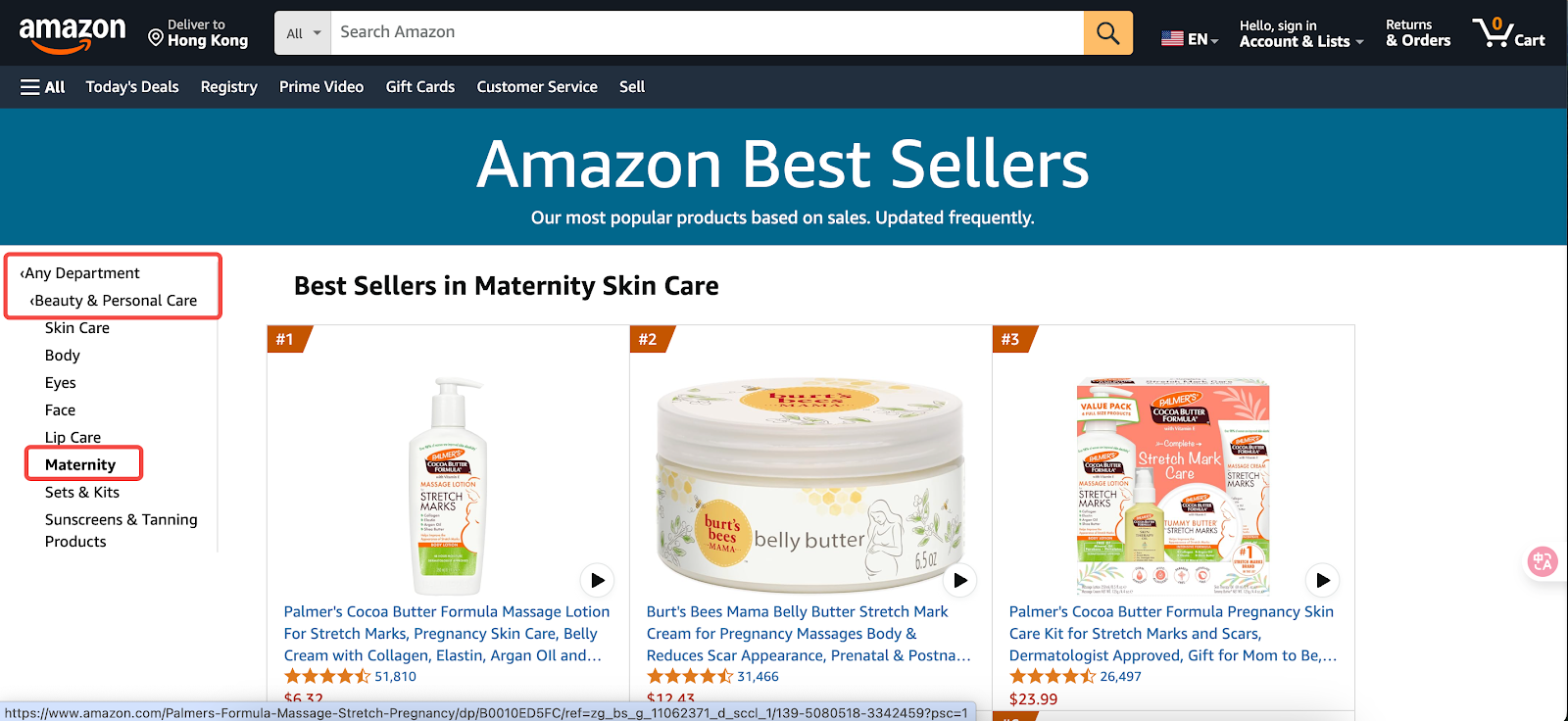
2. Interpret Key Metrics:
- BSR (Best Sellers Rank): The Best Sellers Rank (BSR) is displayed under the Product Details section on the Amazon product page. It indicates how well a product sells in its category. Lower BSR numbers mean higher sales volume.
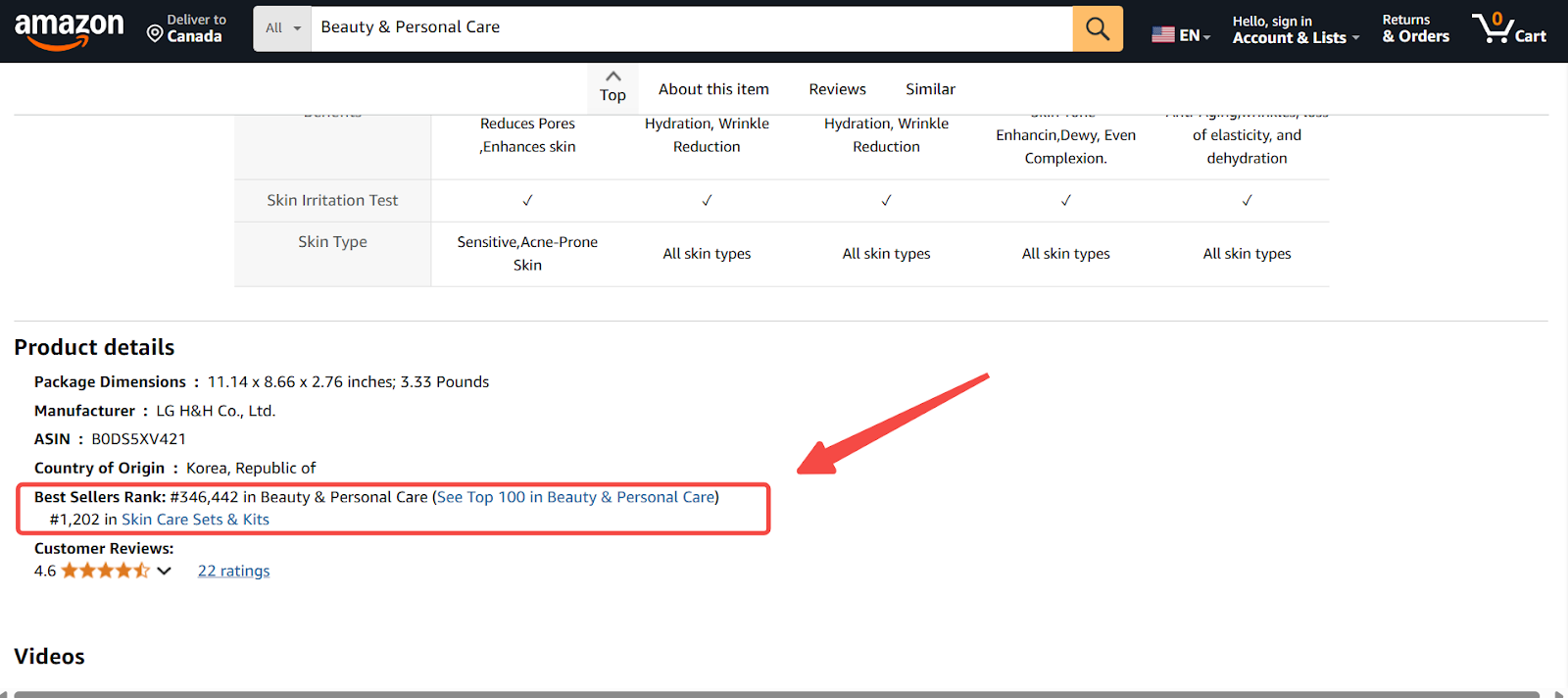
- Category Hierarchy: Amazon organizes products into multiple levels of categories and subcategories. Understanding this hierarchy helps you better position your products and identify niche opportunities.
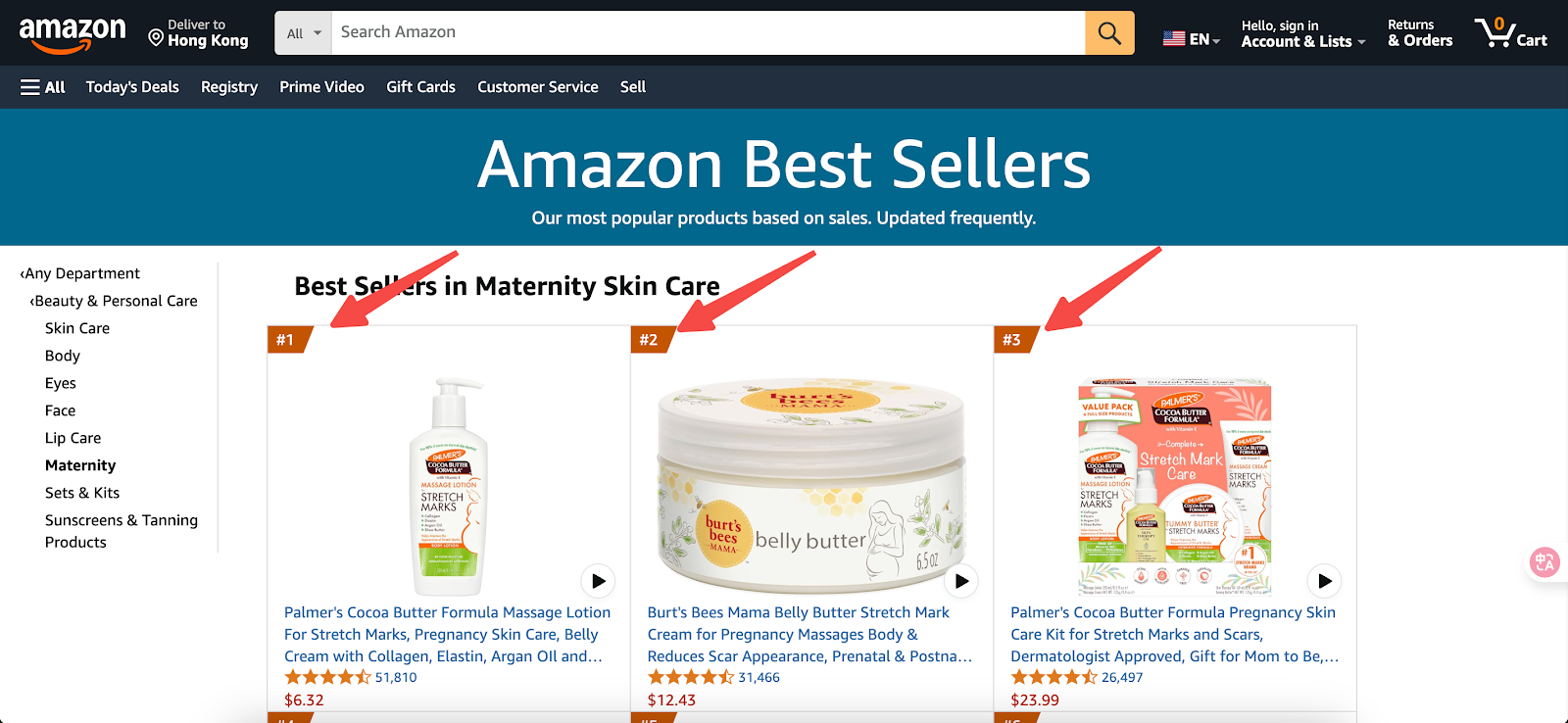
- Price and Reviews: Comparing price points and review counts can reveal potential gaps. Products with strong sales but relatively few reviews may signal emerging opportunities with less competition.
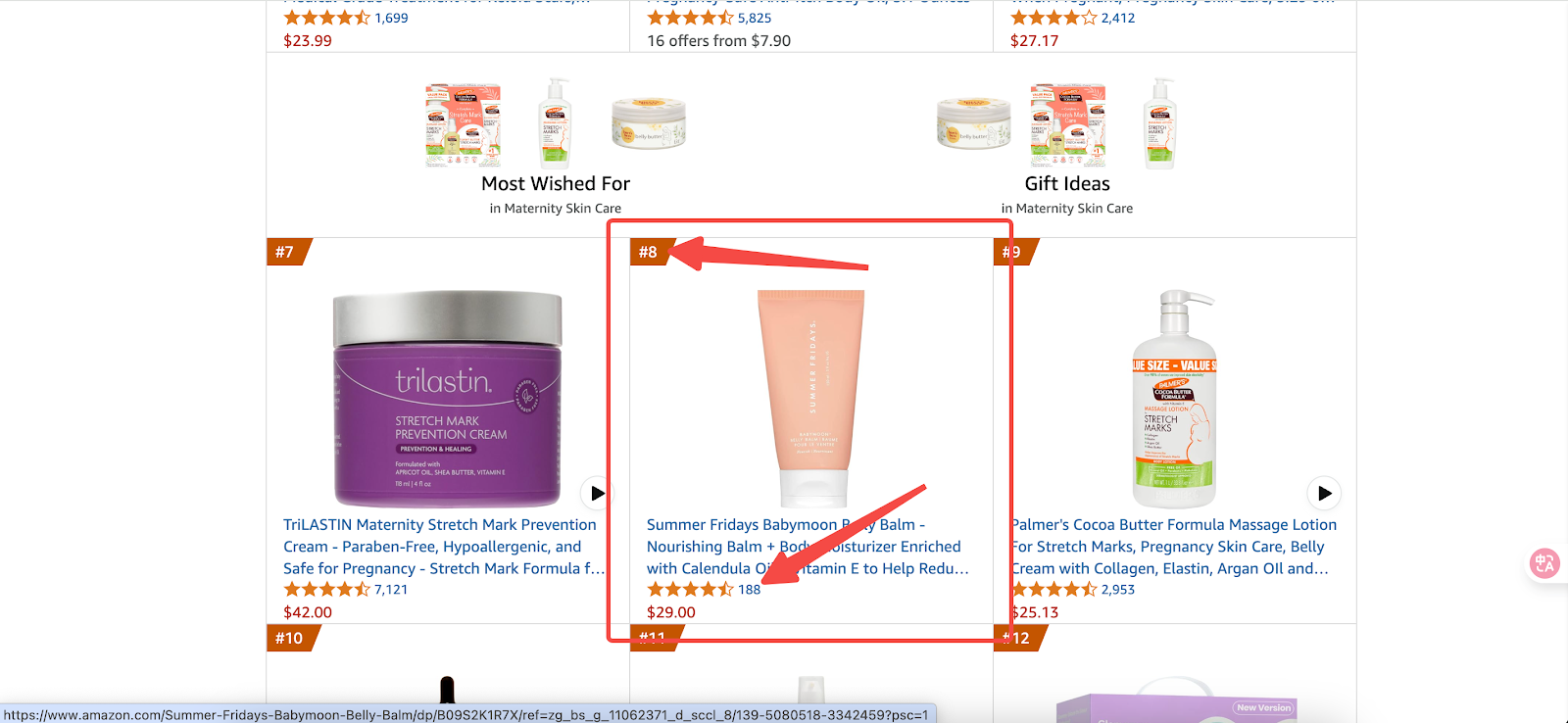
- Product Details: Reviewing product listings, including titles, images, descriptions, and customer reviews, helps you evaluate what makes top-selling products successful and how you can optimize your own listings.
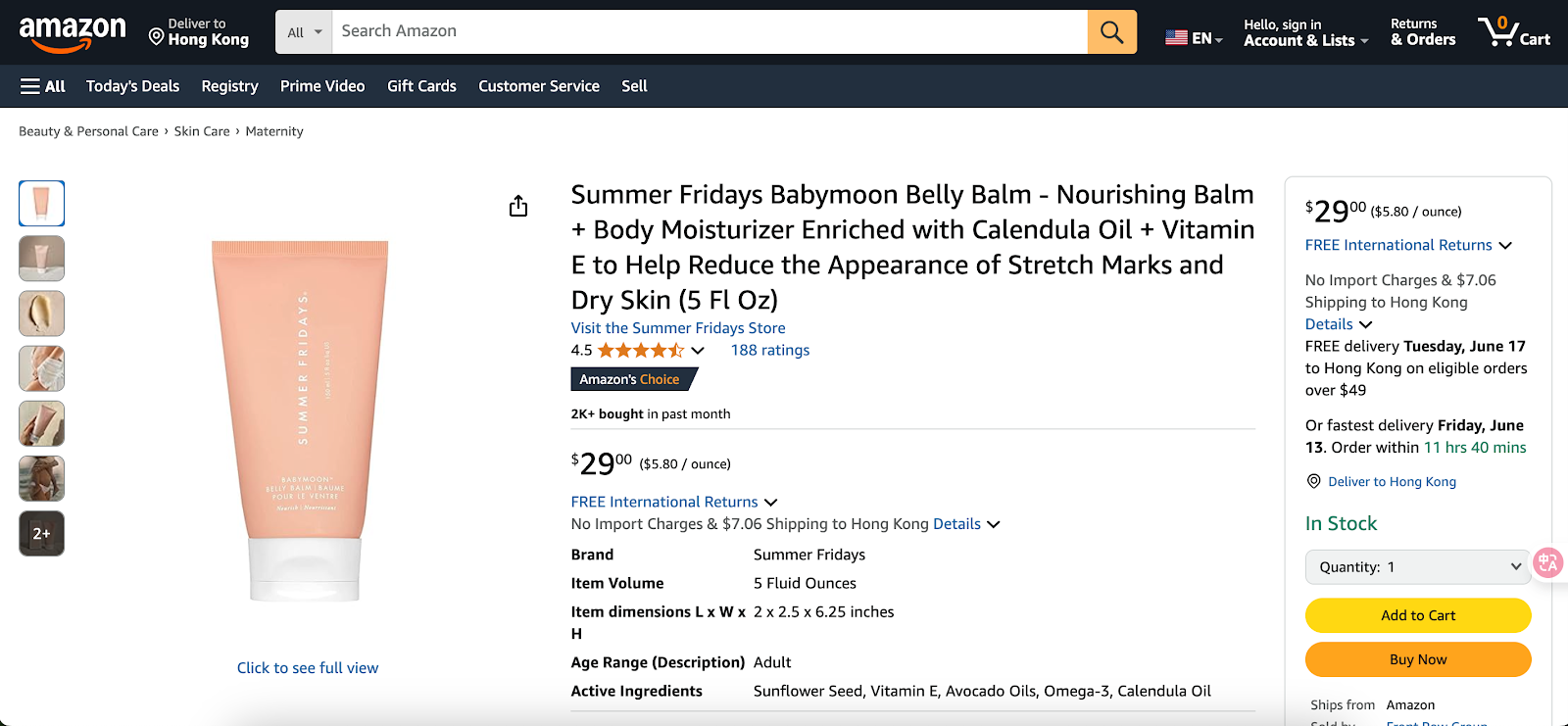
3. Cross-Reference Multiple Lists:
- Most Wished For: Identifies potential demand.
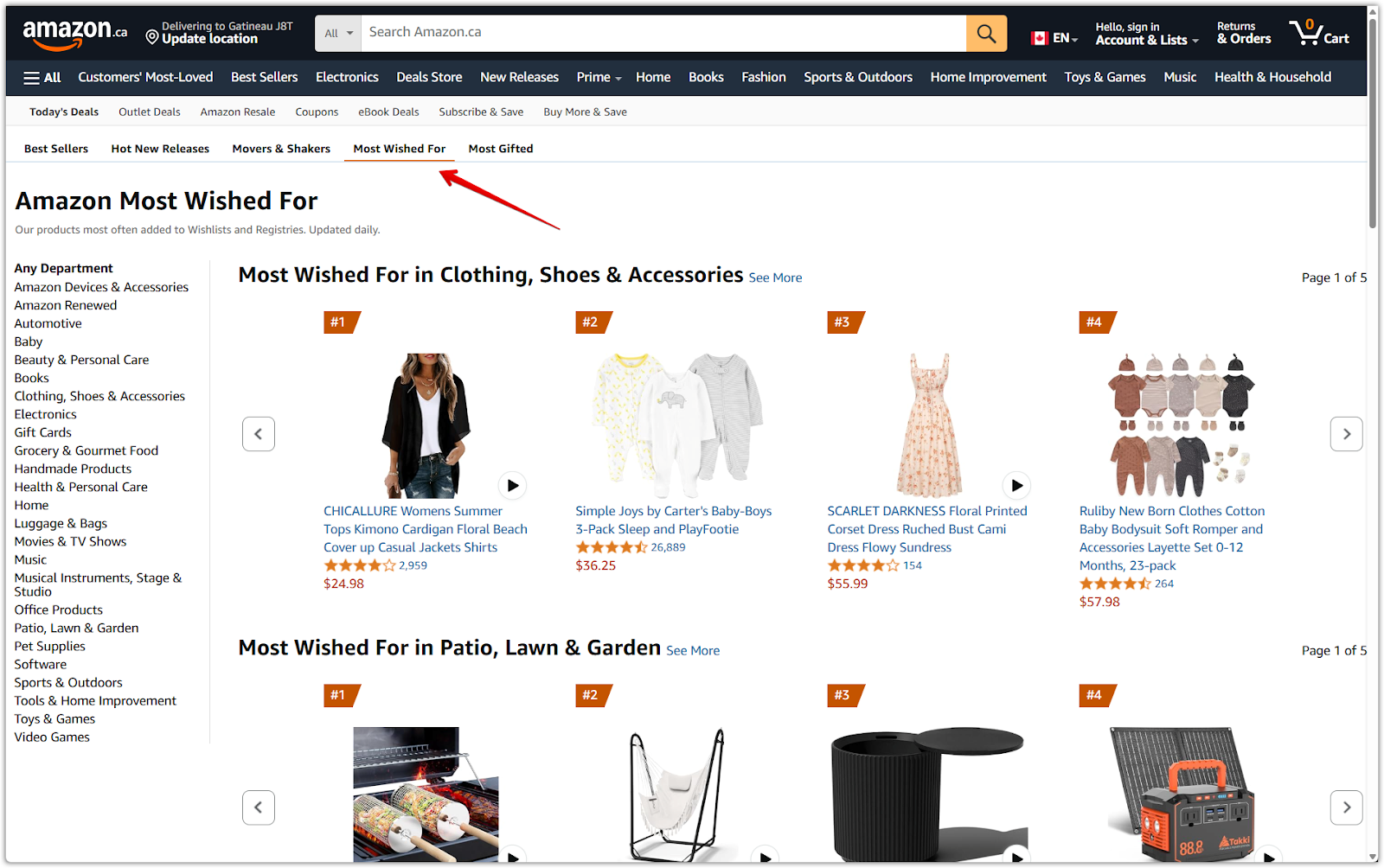
- Gift Ideas: Useful for seasonal and holiday product planning.
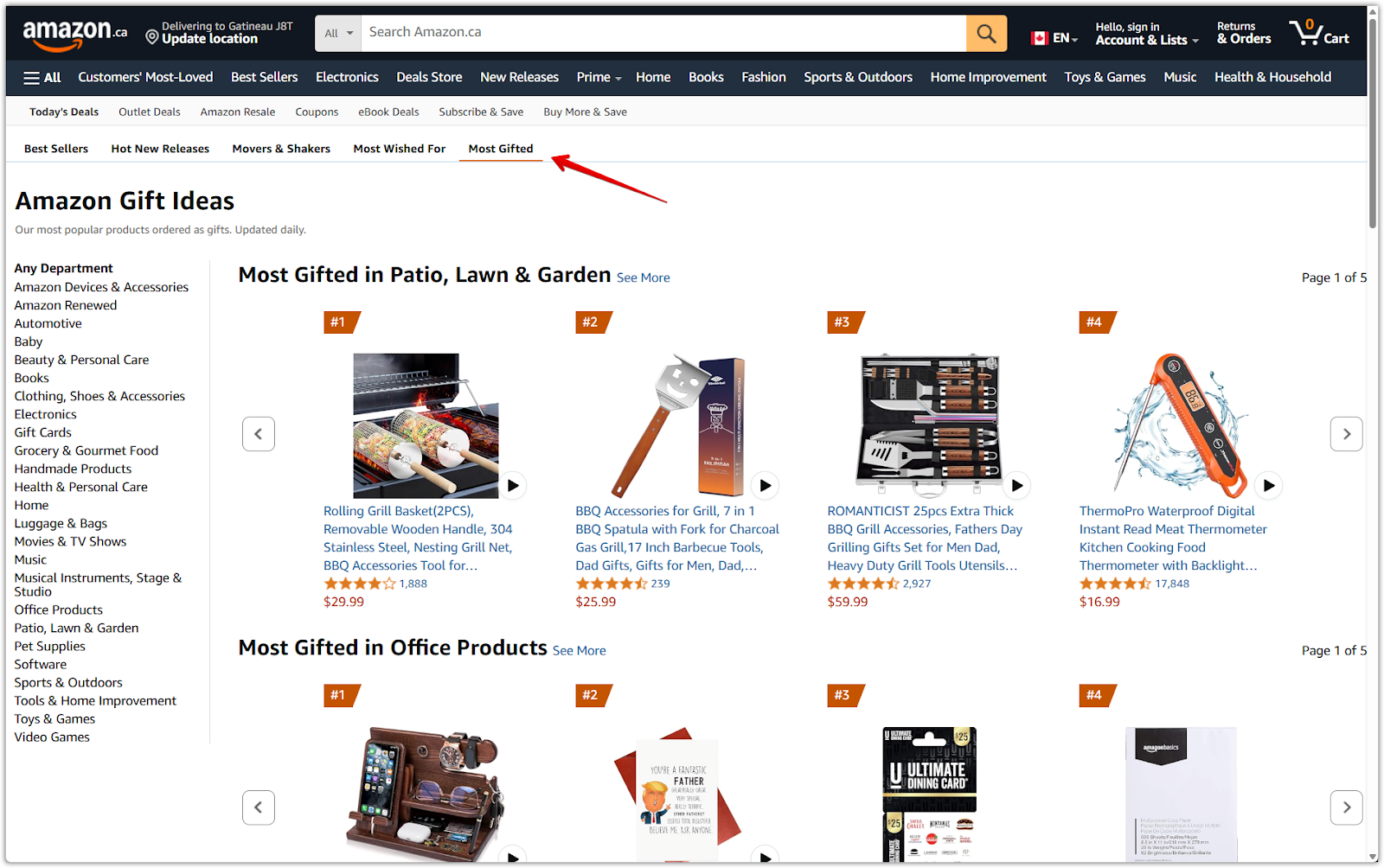
4. Track consistently with a product log: Create a simple spreadsheet to record Best Sellers Rank, price, and review count at the same time each day (e.g. 10 AM PT). This helps identify whether a product’s performance is stable, rising, or seasonal.
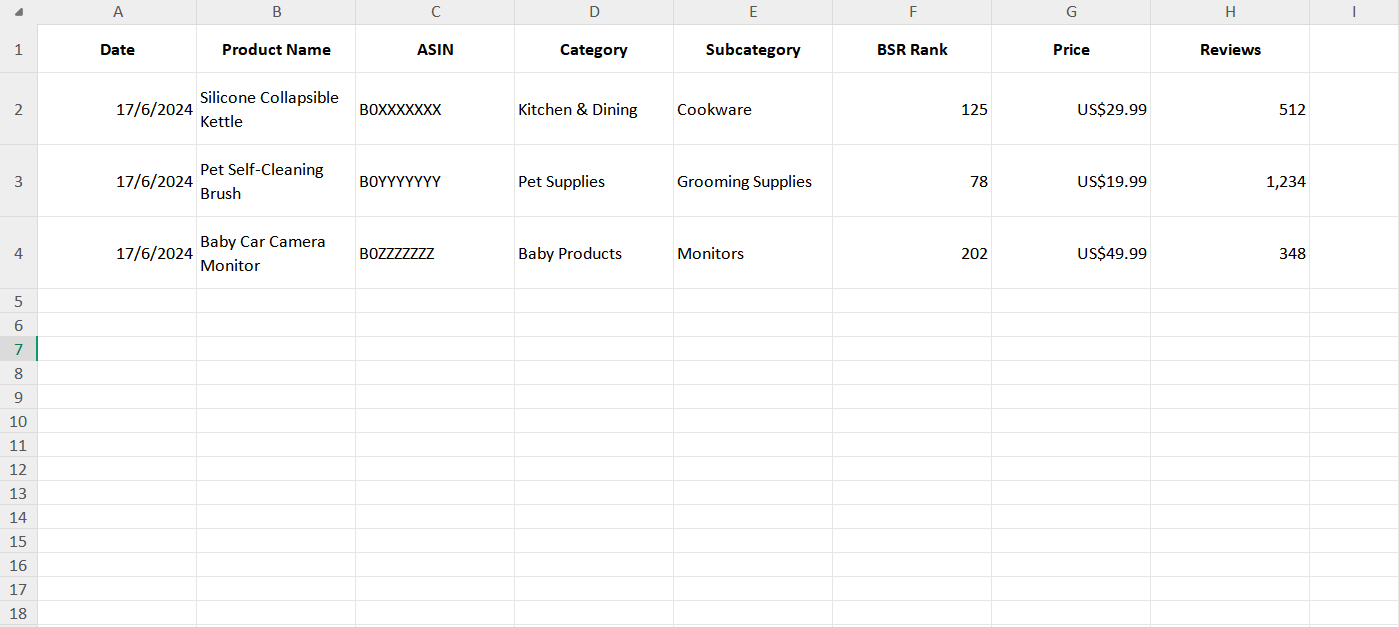
Using SellerSprite for Market Validation
SellerSprite is a product research and data analysis platform that complements Amazon Best Sellers by providing deeper insights into sales trends, keyword traffic, and competitor performance. It helps sellers evaluate product potential and make informed decisions.
- Validate Product Potential with Data: Use real-time and historical sales data to accurately evaluate whether a product is worth launching.
- Minimize Sourcing Risks: Data-driven insights help avoid common sourcing mistakes and reduce costly trial-and-error cycles.
- Understand Customer Search Behavior: Analyze keyword trends to discover what customers are actively searching for.
- Stay Ahead of Competitors: Monitor competitors’ sales performance, pricing, and review growth to fine-tune your strategy.
SellerSprite Features
- Product Tracking & Monitoring: Continuously track changes in sales volume, pricing, review counts, and seller rankings for any product.
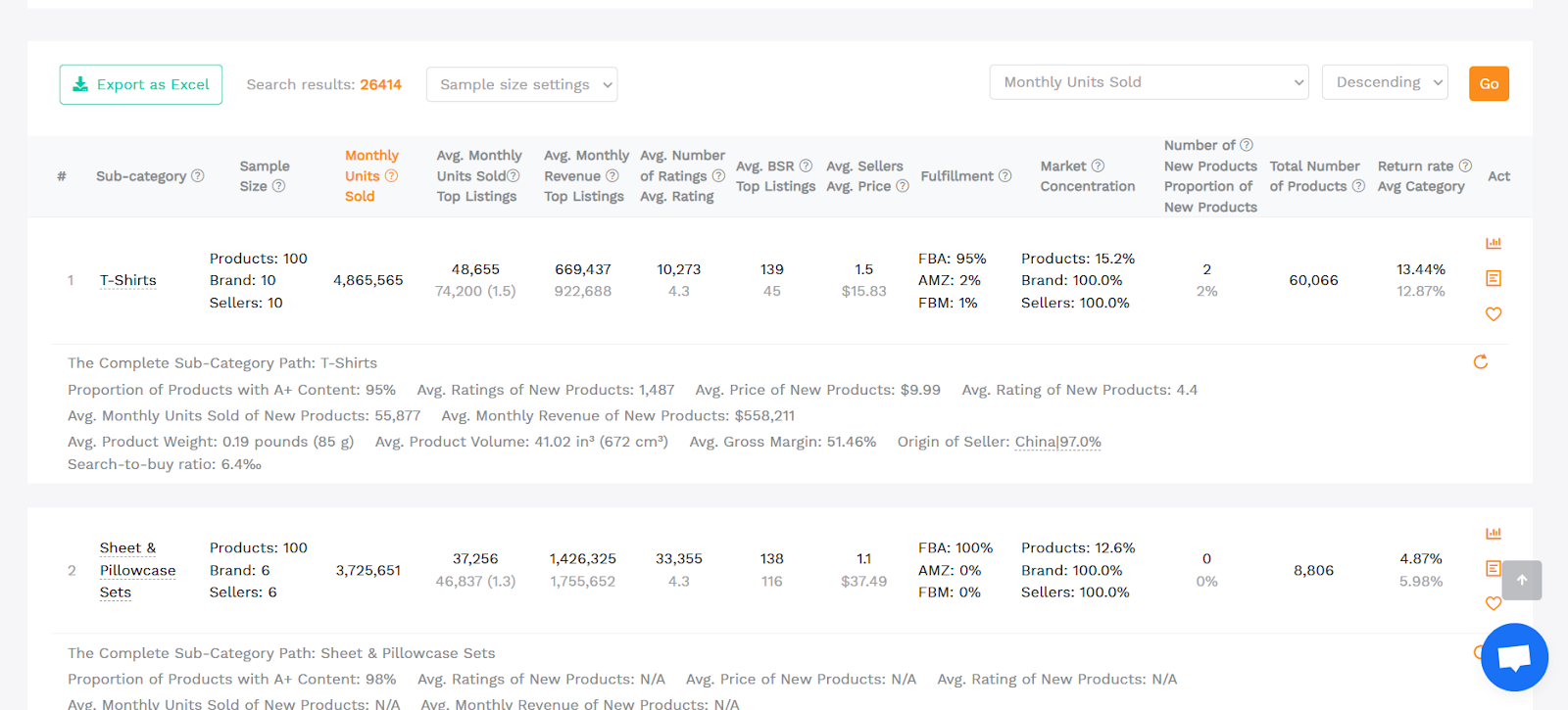
- Keyword Reverse Lookup & Discovery: Find which search terms drive traffic to top-selling products and discover untapped keywords for listing optimization.
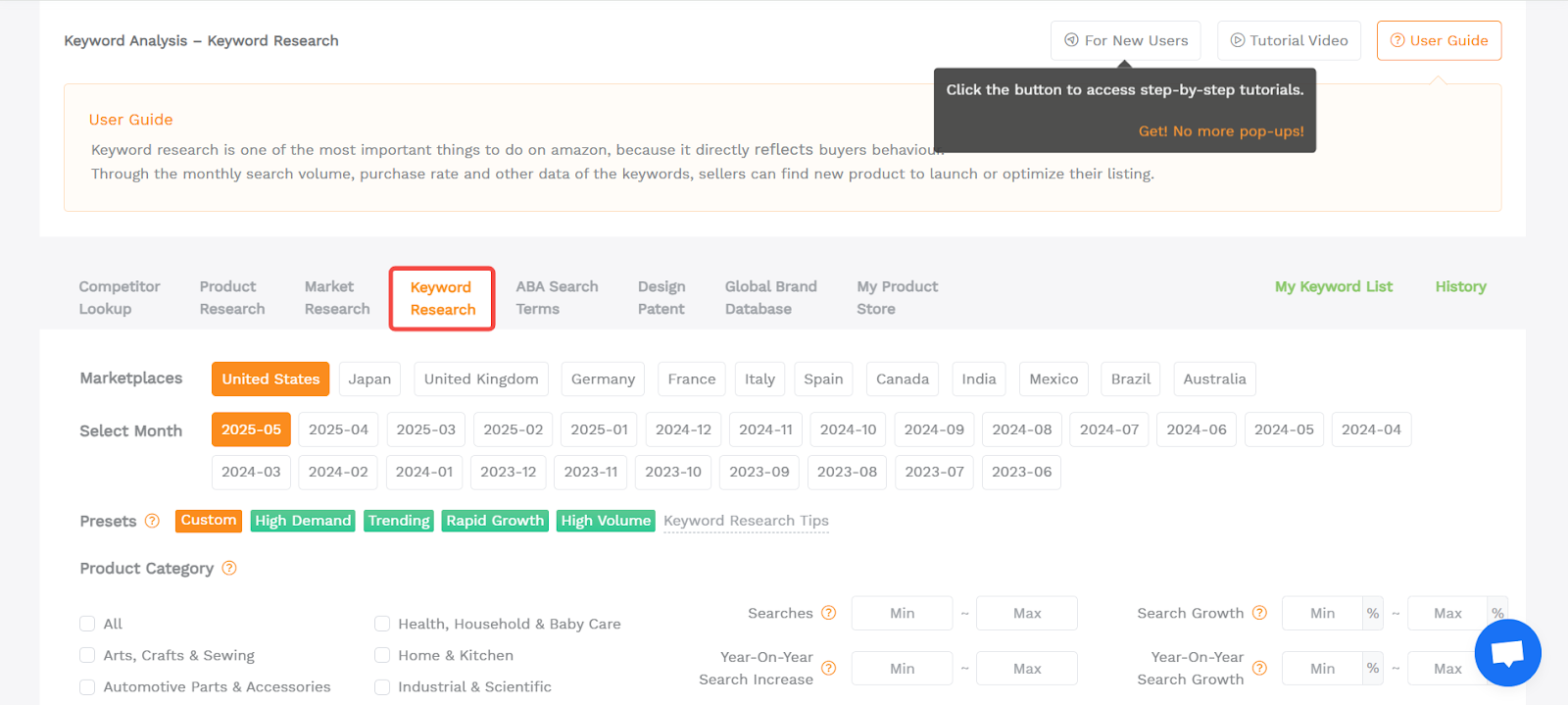
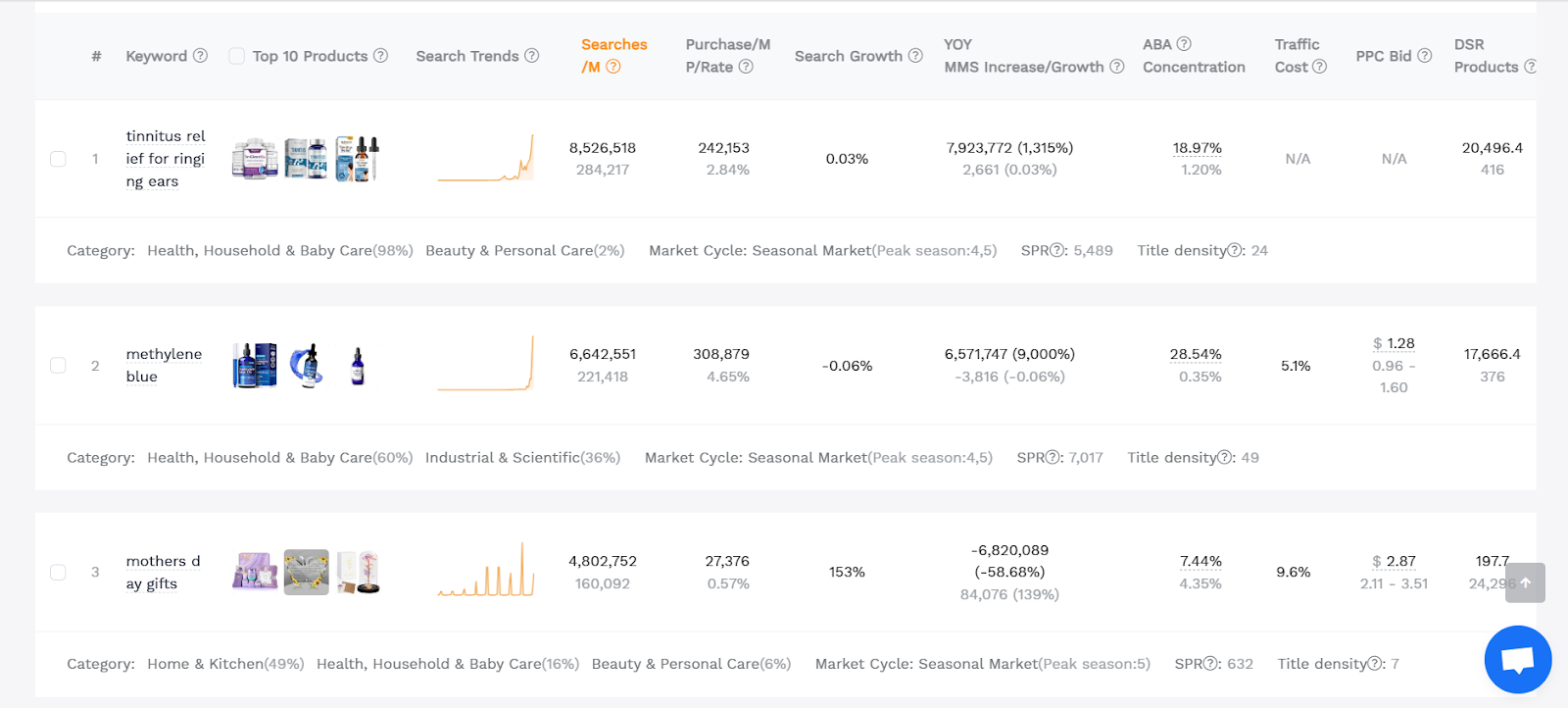
1. Access SellerSprite: Visit SellerSprite’s official site , register with your phone number and email, and log in. Then click Competitor Lookup.
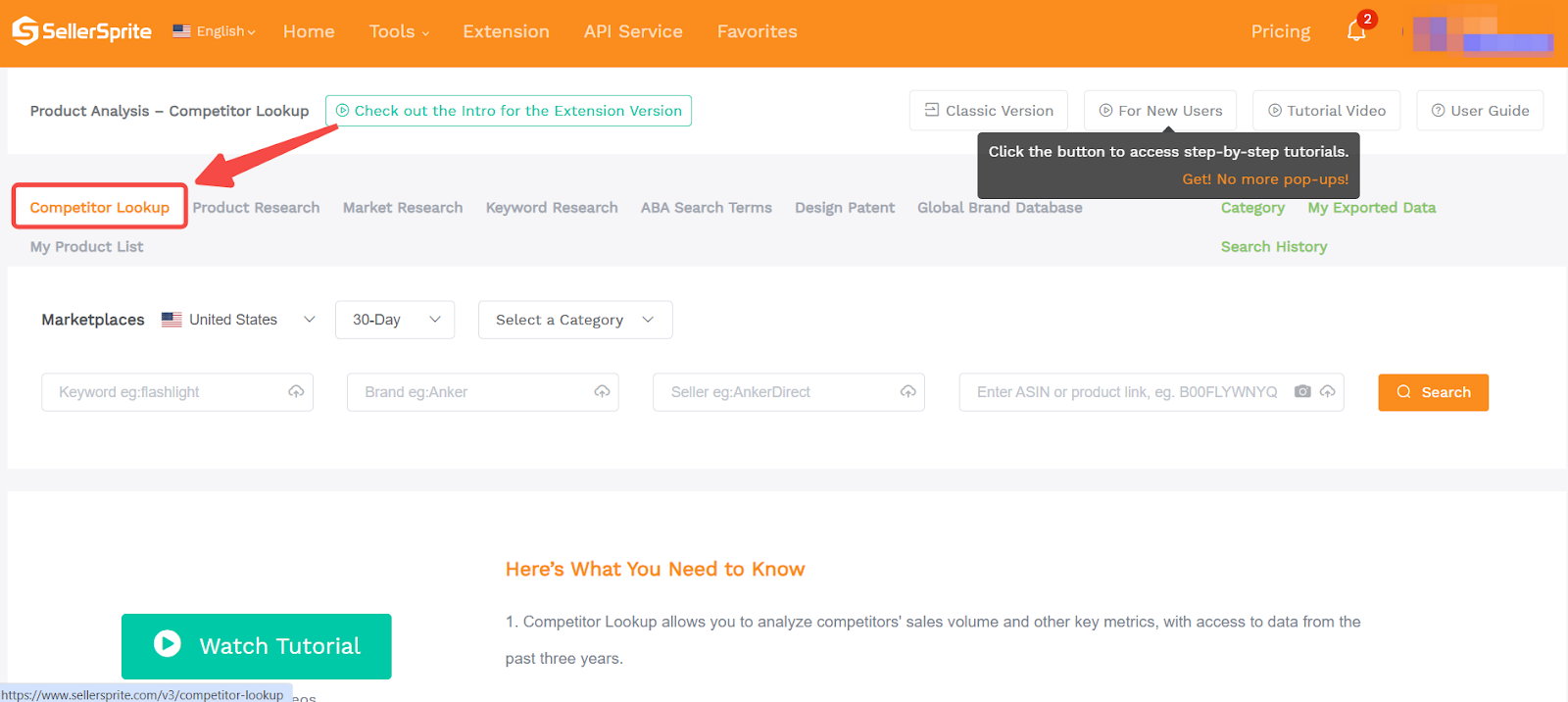
2. Research by ASIN or Keyword: Retrieve ASINs directly from Amazon product URLs (after "dp/"), or use third-party tools like iSellerPal for bulk ASIN searches.
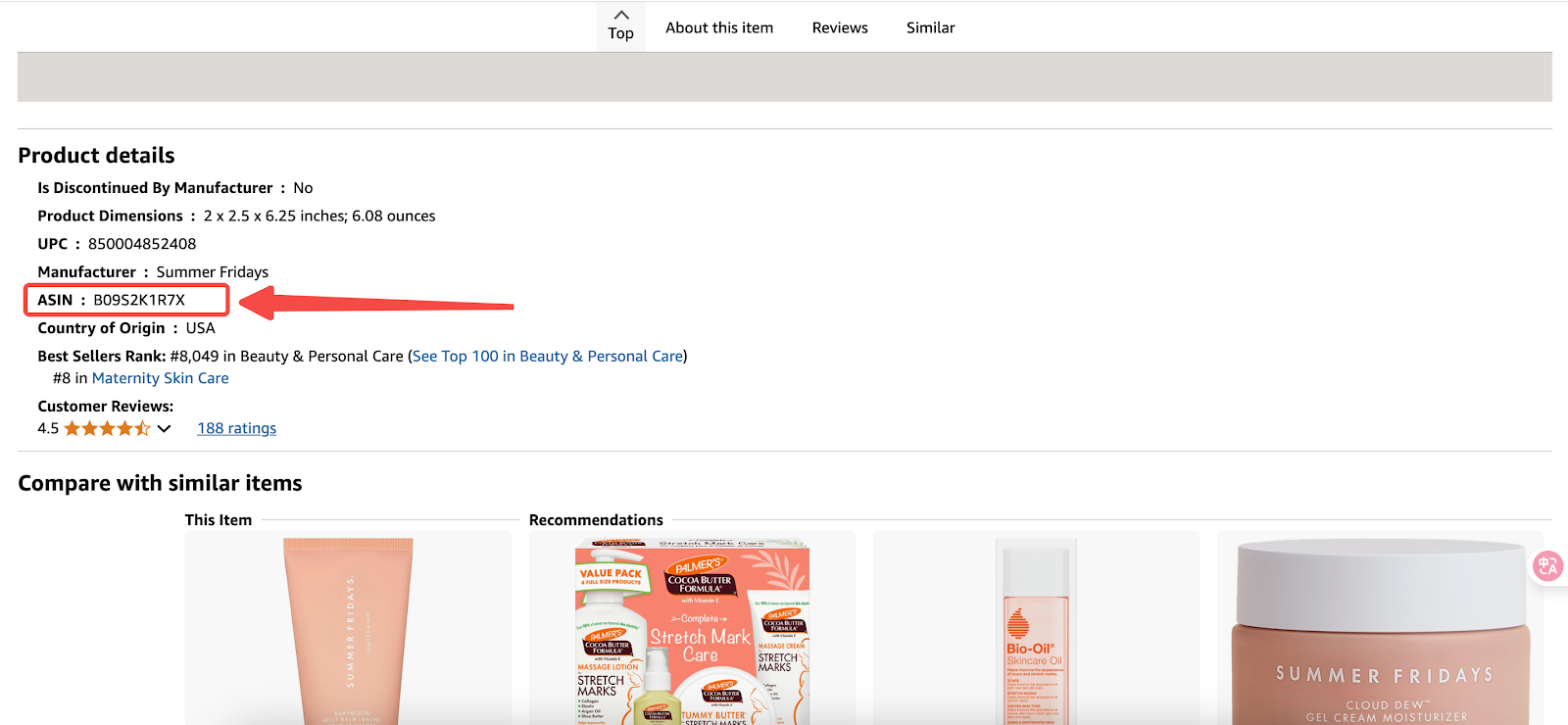
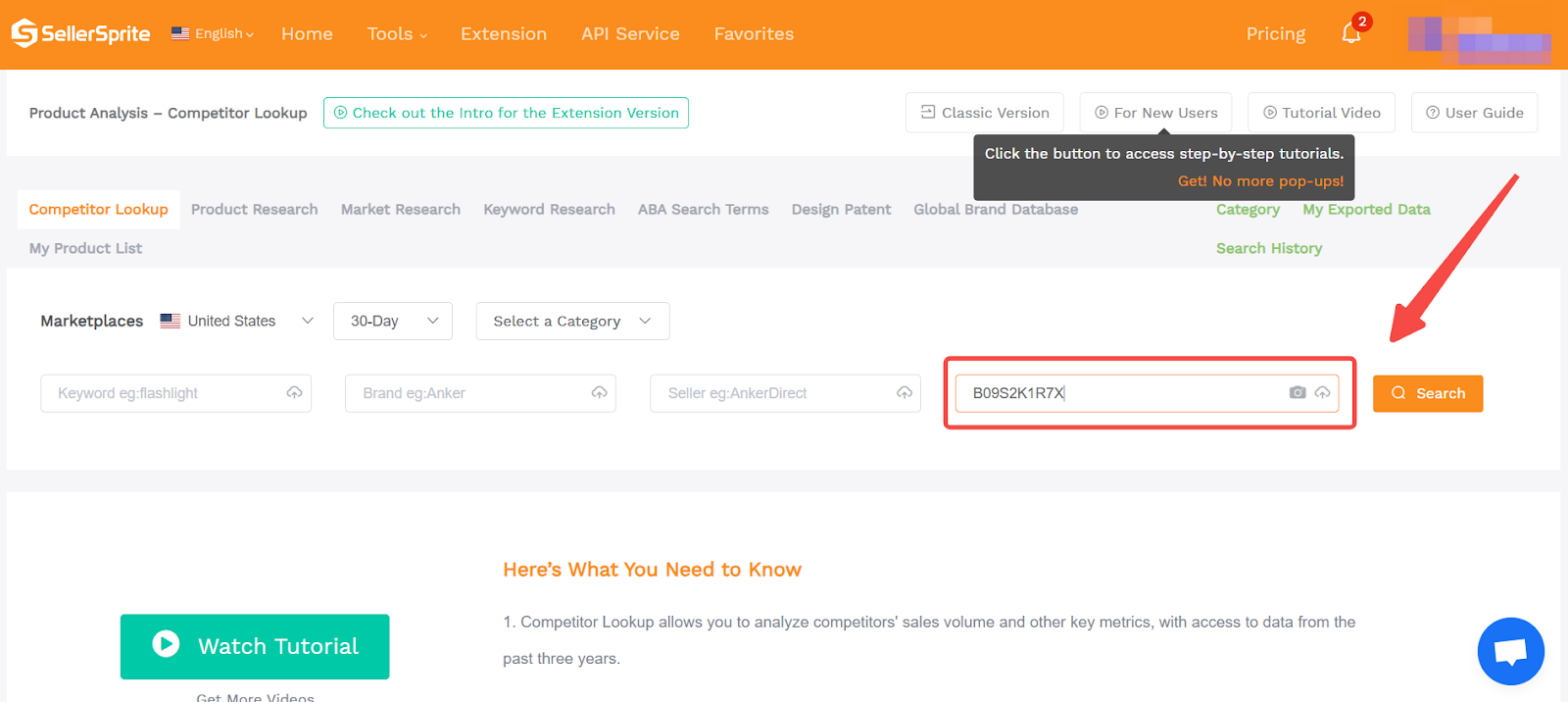
3. Evaluate Core Metrics: Hover over metric indicators for additional explanations, and analyze monthly sales, review growth, and seller count. In many categories, selling over 3,000 units per month indicates strong demand.
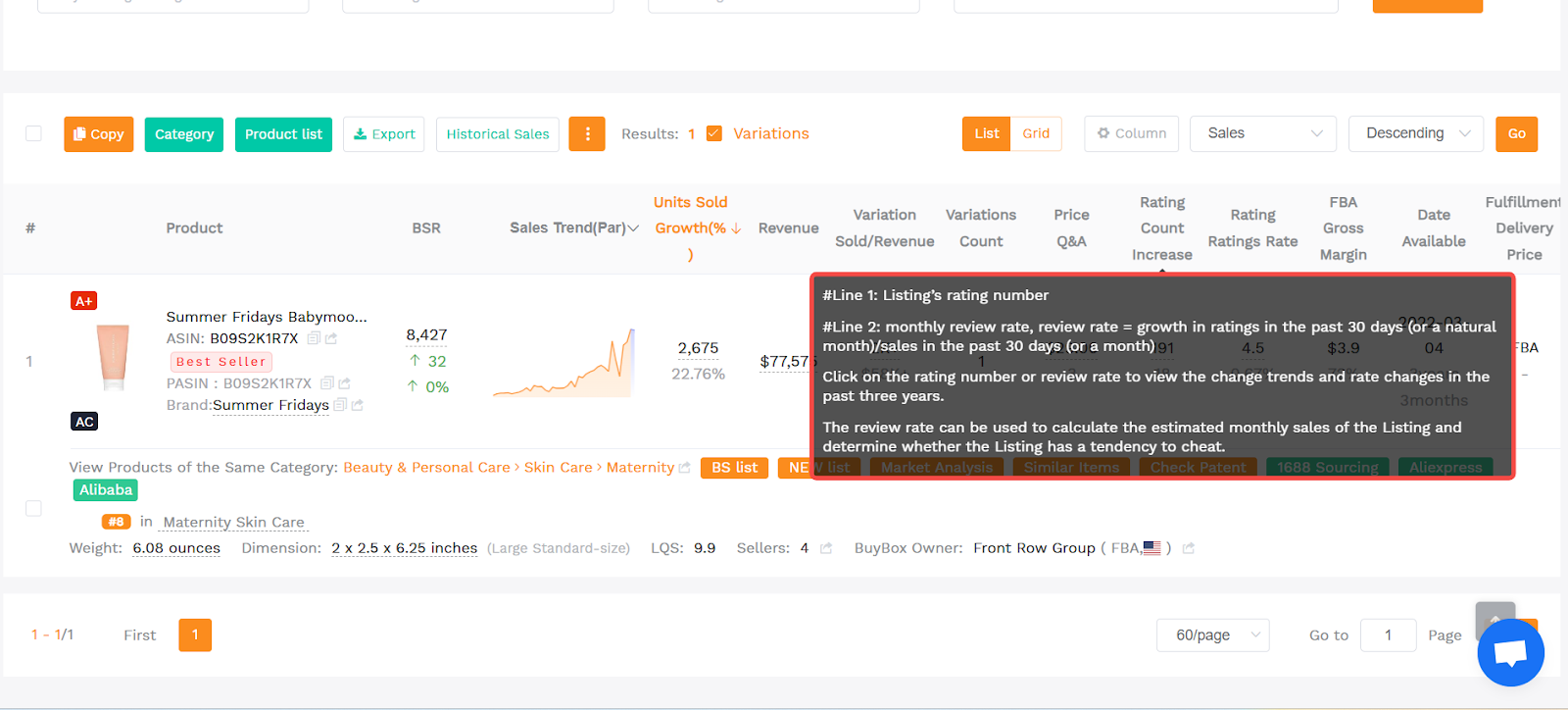
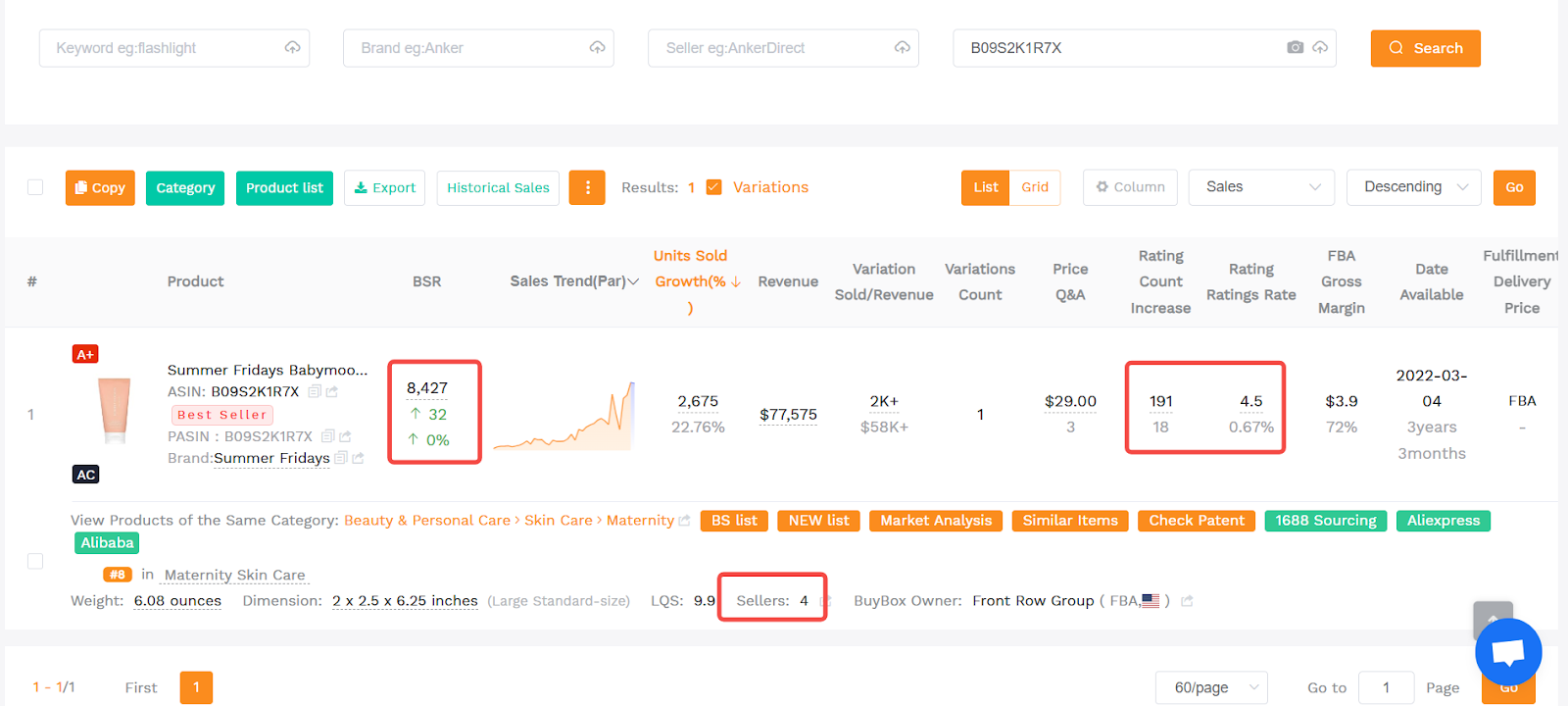
4. Export and Filter Data: If the search returns a large dataset, export results to Excel and apply filters to identify products with high sales, low competition, and strong margins.
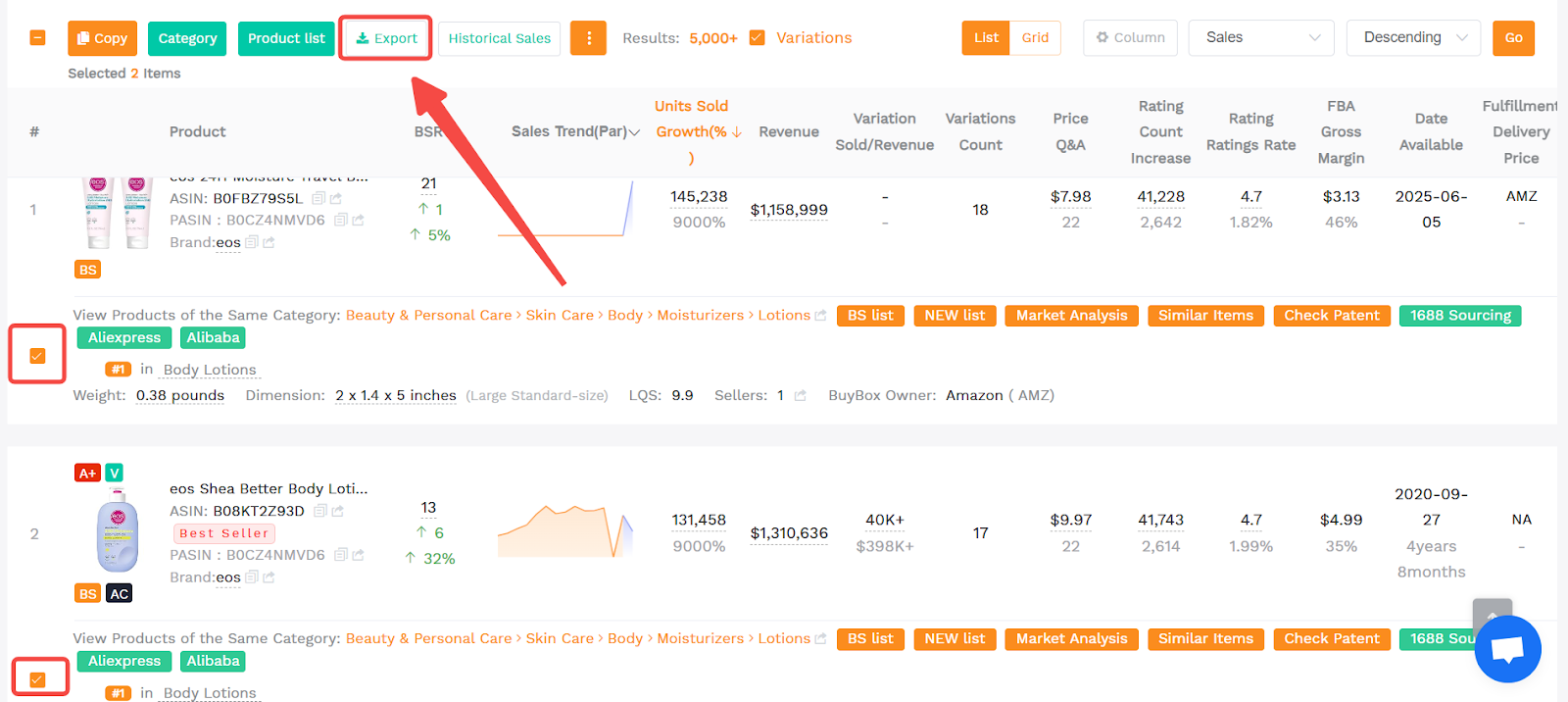
5. Advanced Techniques:
- Category Trend Analysis: Use category growth rates to identify rising trends.
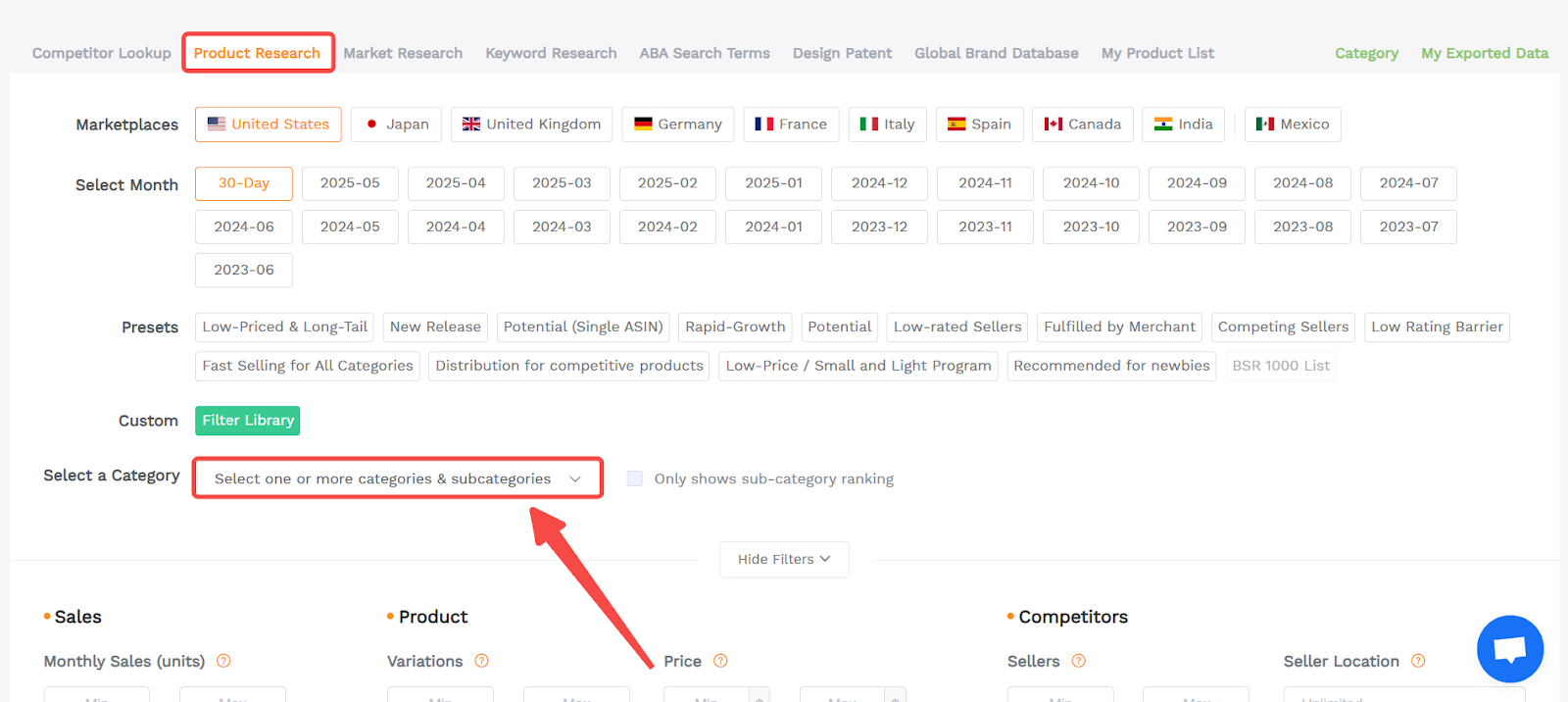
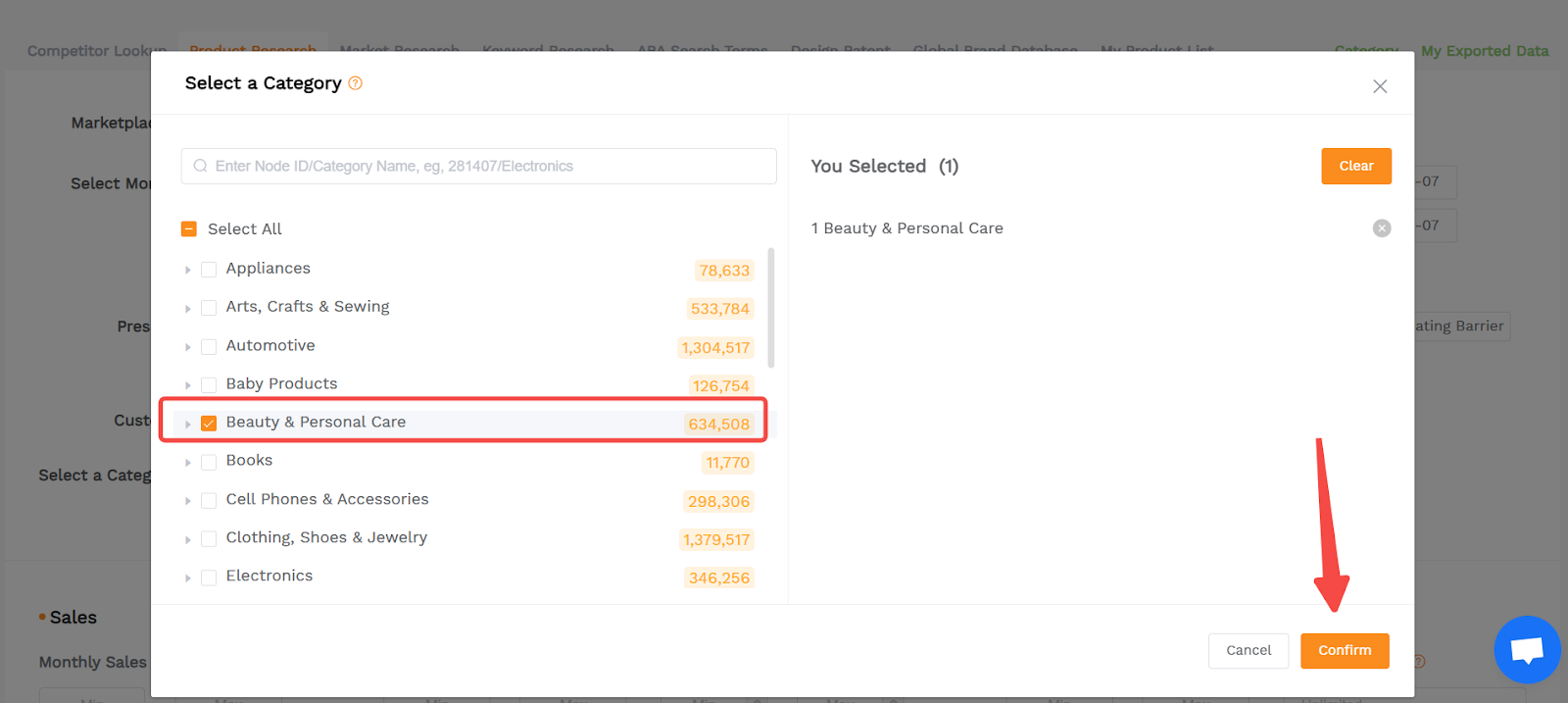
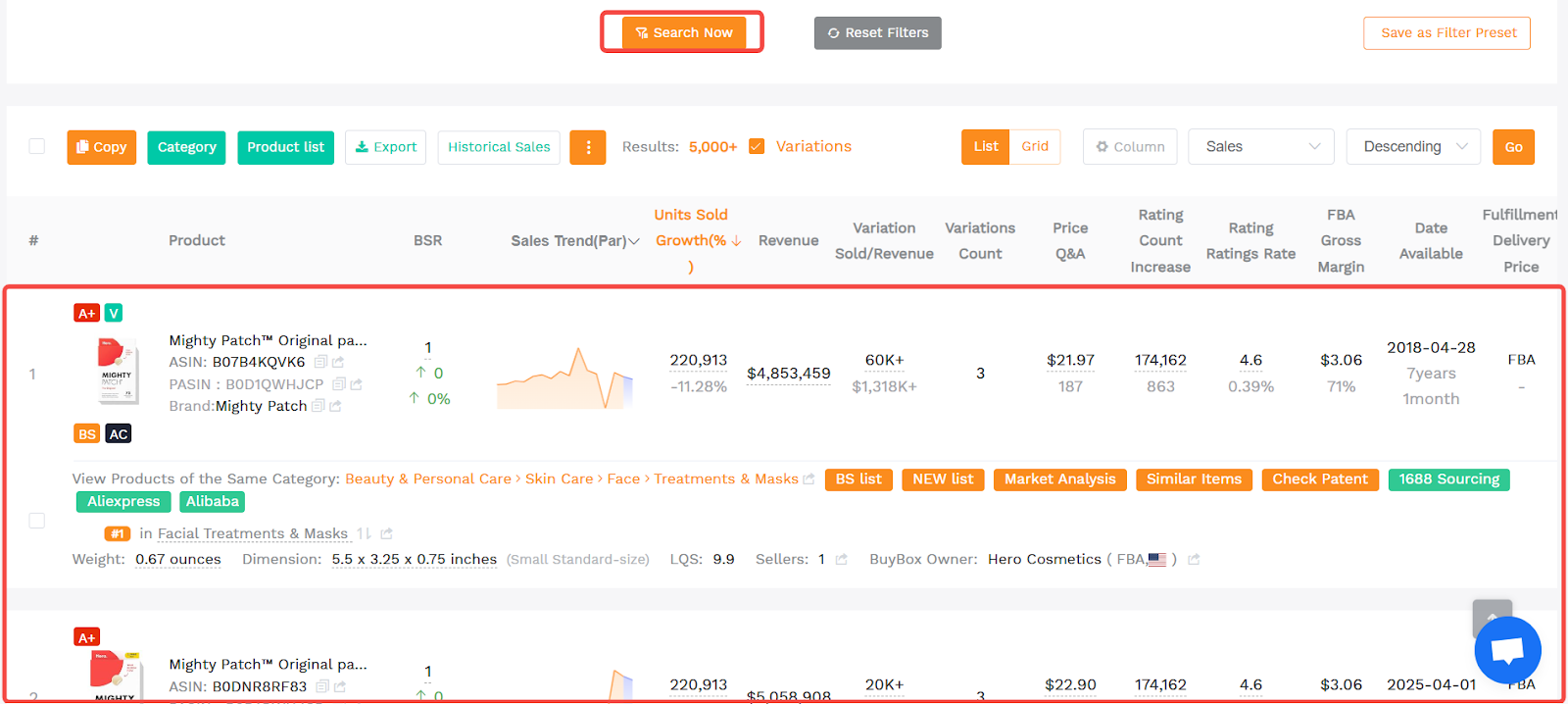
- Negative Review Analysis: Review 1–3 star ratings to identify areas for product improvement, such as packaging or durability.
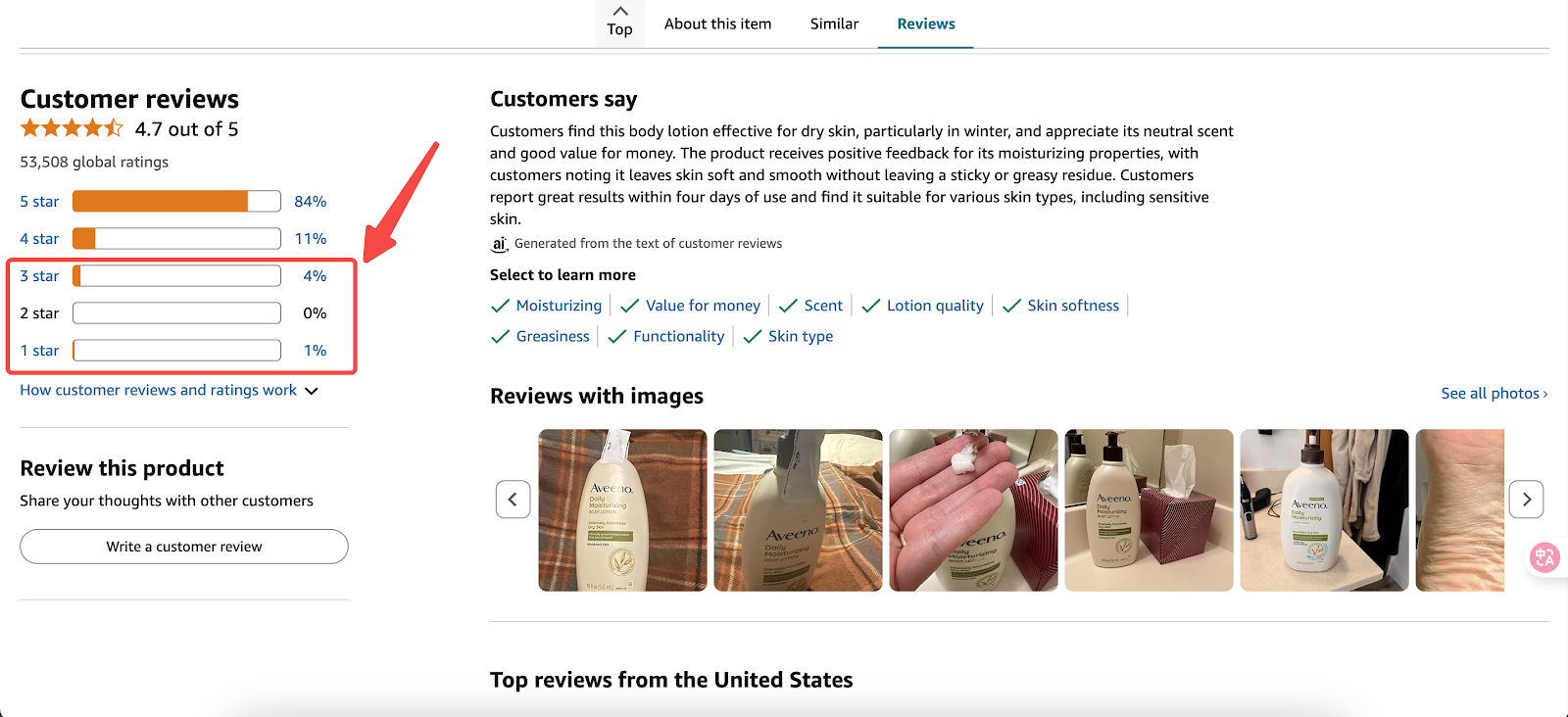
SellerSprite cautionary tips
While SellerSprite provides valuable insights, it’s important to interpret the data with discernment. These cautionary tips will help you avoid common mistakes in product sourcing:
1. Avoid false winners: Not all top-performing products are viable long-term opportunities. Some may show impressive sales data but aren’t sustainable or accessible for new sellers.
- Seasonal products: Items like Christmas decorations or summer beachwear may spike temporarily and then fall off sharply, leaving you with unsold inventory.
- Brand-dominated niches: Categories with well-known brands (e.g. Nike, Apple) often have legal restrictions and strong customer loyalty, making it difficult to break in.
- Short-term trends: Fad products may surge due to social media or viral marketing, but demand can fade quickly once the hype wears off.
- Artificial spikes: Unusual BSR improvements or review growth could be driven by giveaways or review manipulation, rather than genuine demand.
2. Check compliance risks: Use SellerSprite’s compliance tools to flag potential issues with restricted products, trademarks, or patent violations. Selling non-compliant items can lead to account suspension or product takedowns on platforms like Amazon.
3. Verify supplier pricing: Cross-reference promising products with sourcing platforms like 1688 or Alibaba to ensure realistic margins.
- A product might look profitable on the surface, but if your sourcing cost is too high after shipping, fees, and ads, the margin may disappear.
- Always factor in hidden costs like packaging, branding, and FBA fees if applicable.
4. Be cautious with review metrics: High review counts may indicate market saturation, while sudden review spikes can be signs of manipulation. Look for products with steady, organic review growth and moderate competition.
5. Watch seller count trends: A rapidly increasing number of sellers on a product listing often leads to price wars and shrinking profits. Evaluate whether the niche can still support new entrants.
By combining Amazon Best Sellers and SellerSprite, you can uncover new product opportunities, evaluate market competition, and validate profitability using real data. This integrated approach streamlines your product research process and increases your chances of finding sustainable best-sellers.



Comments
Please sign in to leave a comment.